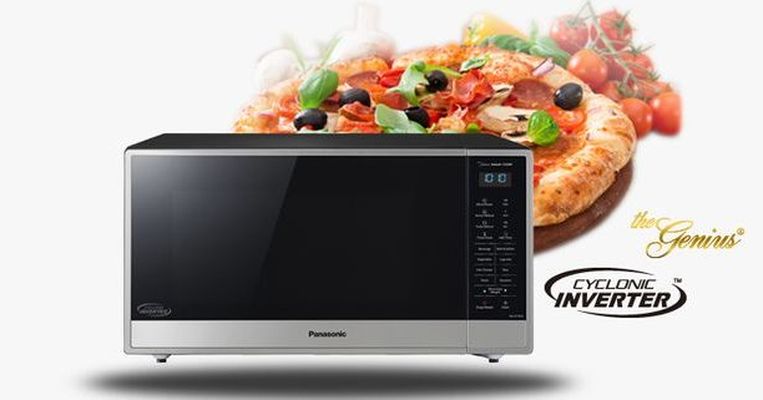Microwave for many decades is one of the most popular kitchen appliances and is present in almost all kitchens. Of course, high consumer demand stimulates companies to constantly improve their models, increasing their competitiveness. Innovative technologies are one of the main ways to expand their functionality and increase efficiency, which are the main criteria for choosing any household appliances. Of course, the choice of microwave is no exception.
Microwave is one of the most complex technical devices and is constantly improved by innovations. Use of Inverter technology for power control is one of the most significant in this segment.
Of course, an inverter control has long been known and is actively used in air conditioners, refrigerators, etc. to control the engine speed. Inverto is translated from Latin to English as turn or change. Inverter electrical circuit converts direct current into alternating current, providing a smooth change of engine or compressor speed. This technology significantly reduces energy consumption and increases motor efficiency.
Inverter microwave
Panasonic became first company that used advantage of the inverter technology to control the power of a magnetron in a microwave oven. Today, this company offers a wide range of inverter microwaves.
These models have a stylized Inverter inscription in the lower left corner of the front panel.
The electronic power control system of the magnetron and the absence of a transformer are the main differences in the inverter microwave oven.
This technology provides smooth adjustment of power by system of inverter control based on data from sensors. System forms the commands for change of operation mode during cooking the various dishes. For example, a steam sensor reduces output power at the start of vaporization process that prevents splashing inside the chamber due to intense boiling process.
Traditional models always operate at the maximum output magnetron power. Power adjustment is achieved using pulsed operation mode. Therefore, the control system can only change power levels. Typically, the traditional models have three or four power levels, which are switched with the help of a timer. Gears commute the control elements on rear wall of magnetron in the necessary sequence. Changing the duration of the modulation affects the value of power, ensuring its control. Each period of the timer turn corresponds to modulation of high frequency oscillations during part of the cycle. Total duration modulation ultimately determines the overall power of the microwave.
Inverter control provides much more gradations of power levels due to use the low-power waves.
Such models consume less energy and reduce cooking time. Warming up and defrosting the foods also is significantly faster. Such thermal processing mode retains more vitamins and texture of foods.
Additionally, inverter technology provides a reduction in the required space to accommodate technical components, increasing the chamber capacity.
3D cyclonic wave technology
Today, Panasonic continues to actively develop this direction. New 3D cyclonic wave technology is a convincing confirmation of this trend.
The cyclonic wave distributes microwave energy gently in a three dimensional, providing a more uniform absorption of microwave power by foods surface.
Today this technology is used in Panasonic 44L NN-ST785S cyclonic inverter microwave.
Higher price is the only disadvantage of these models.
This video demonstrates the Panasonic inverter microwave with cyclonic wave technology.
